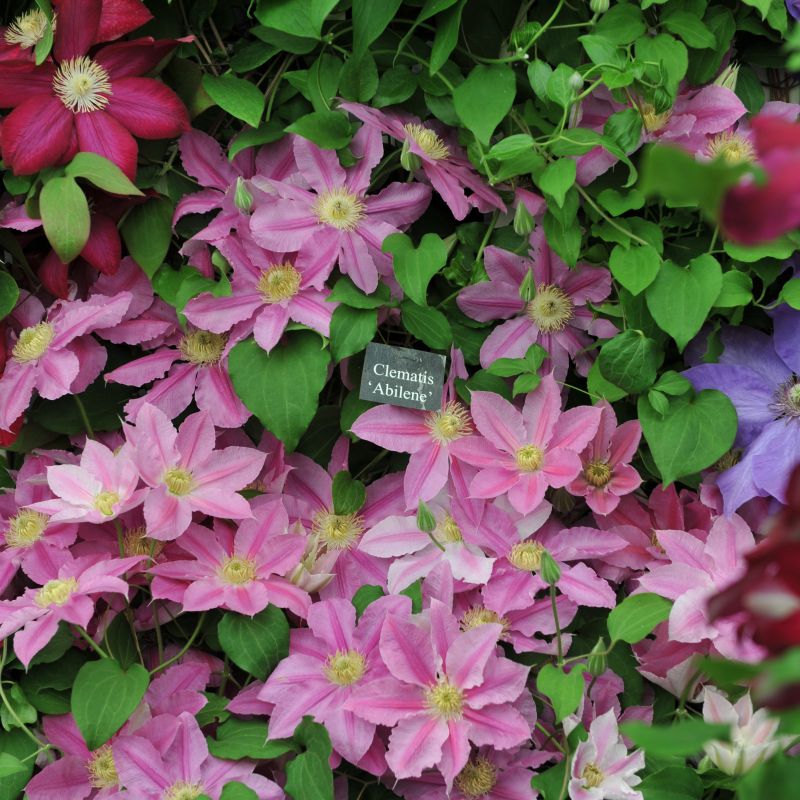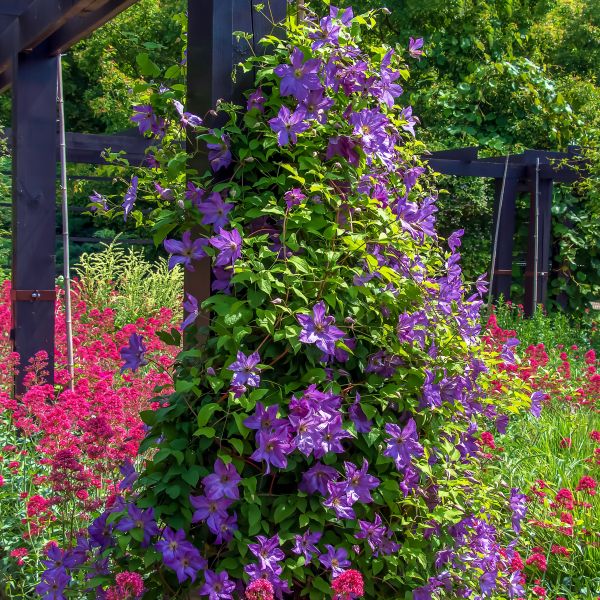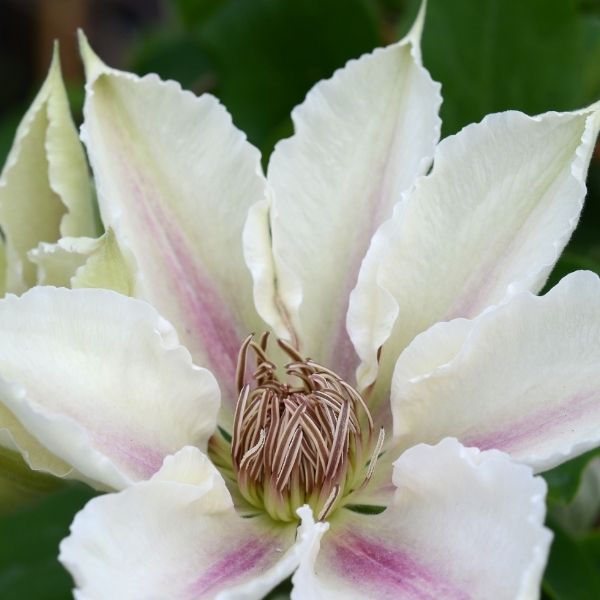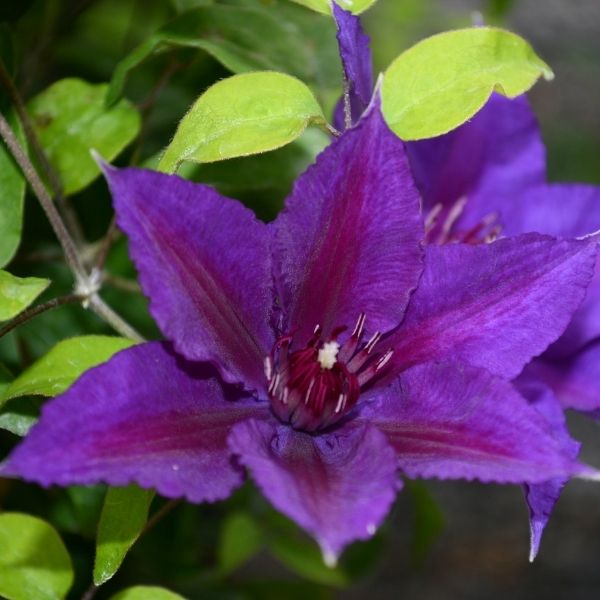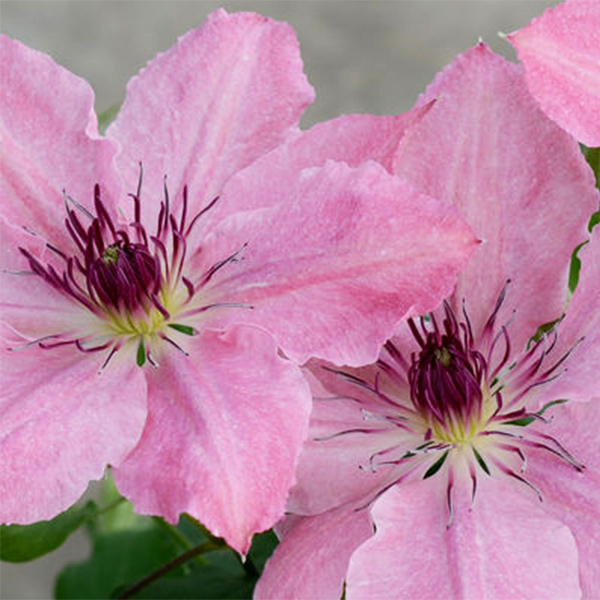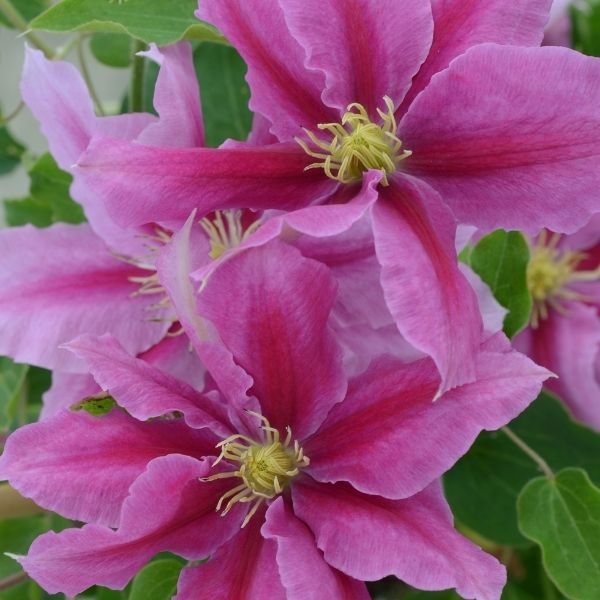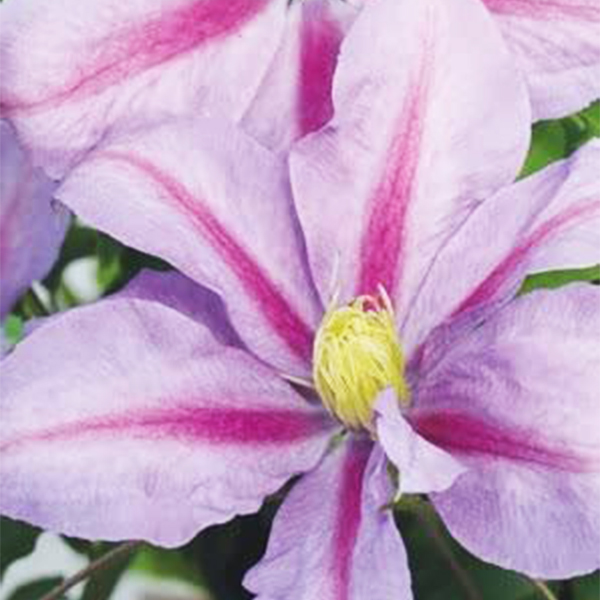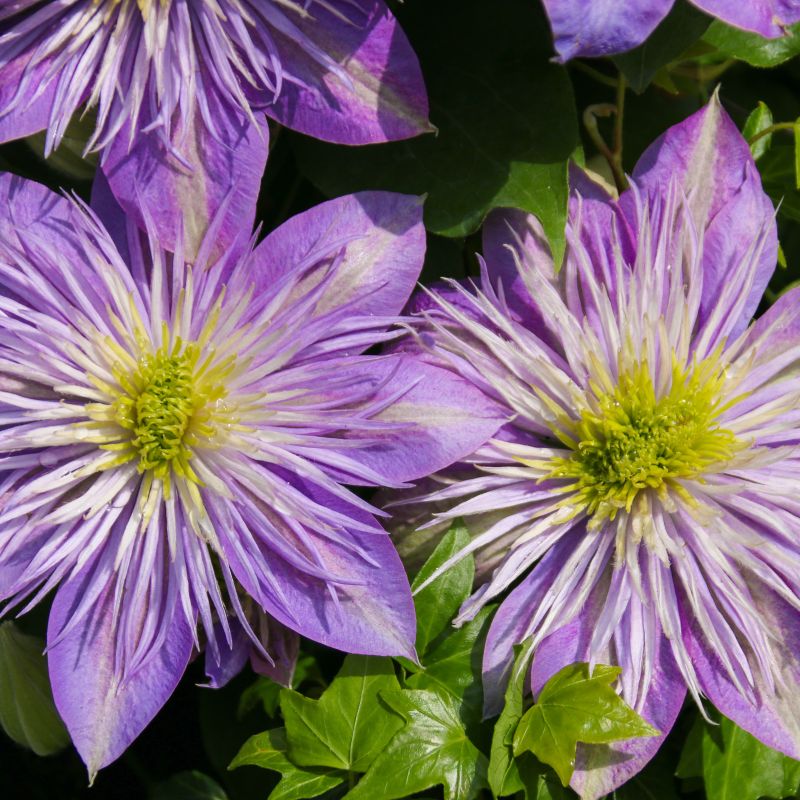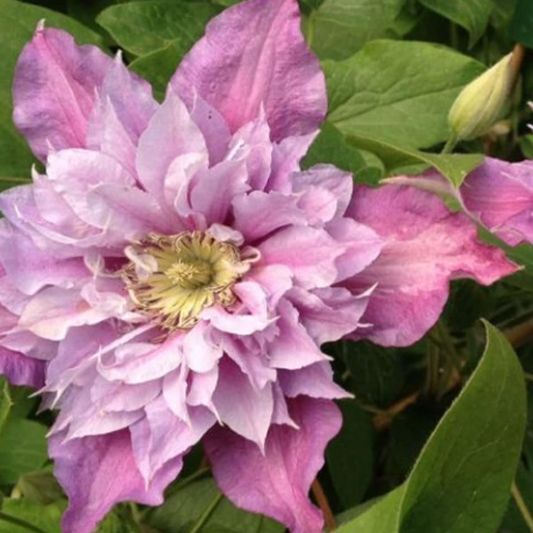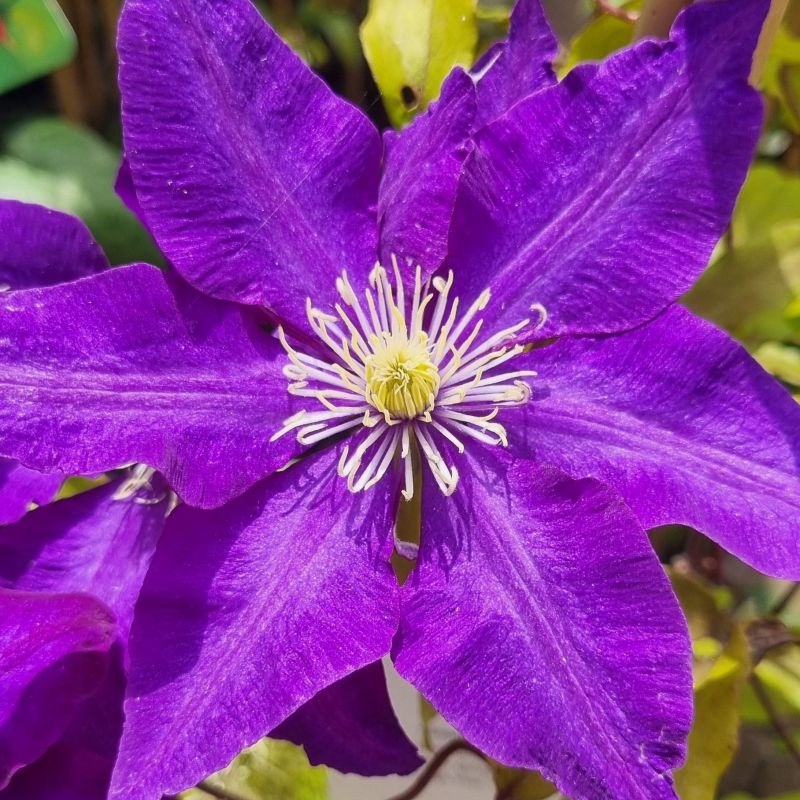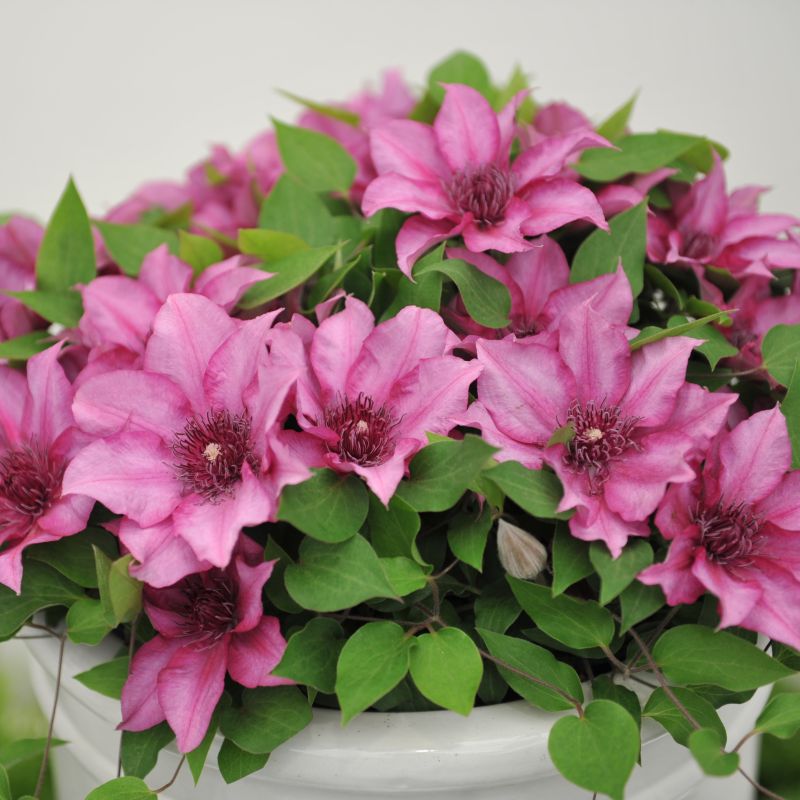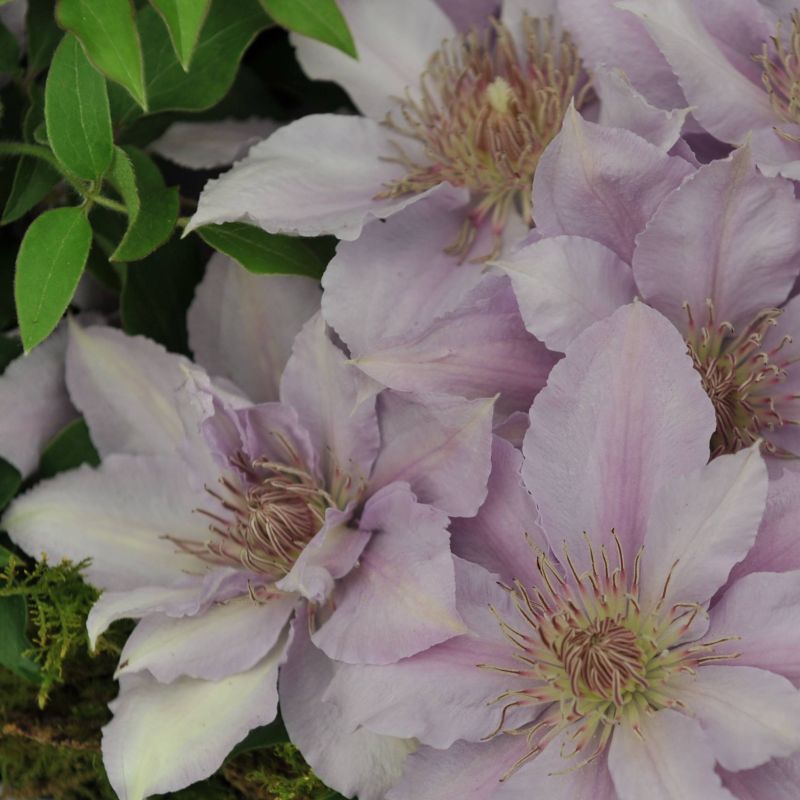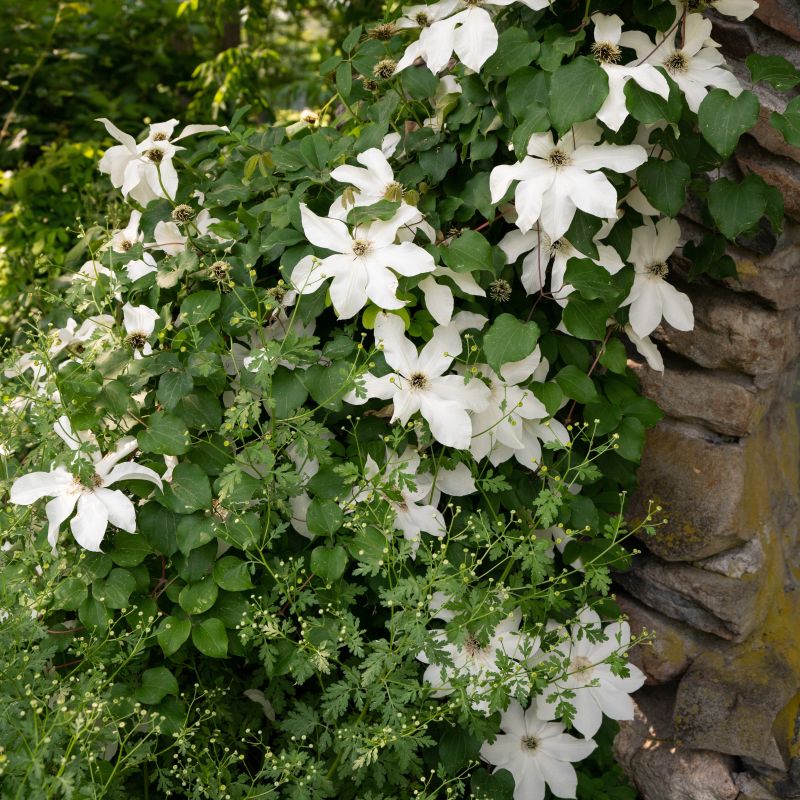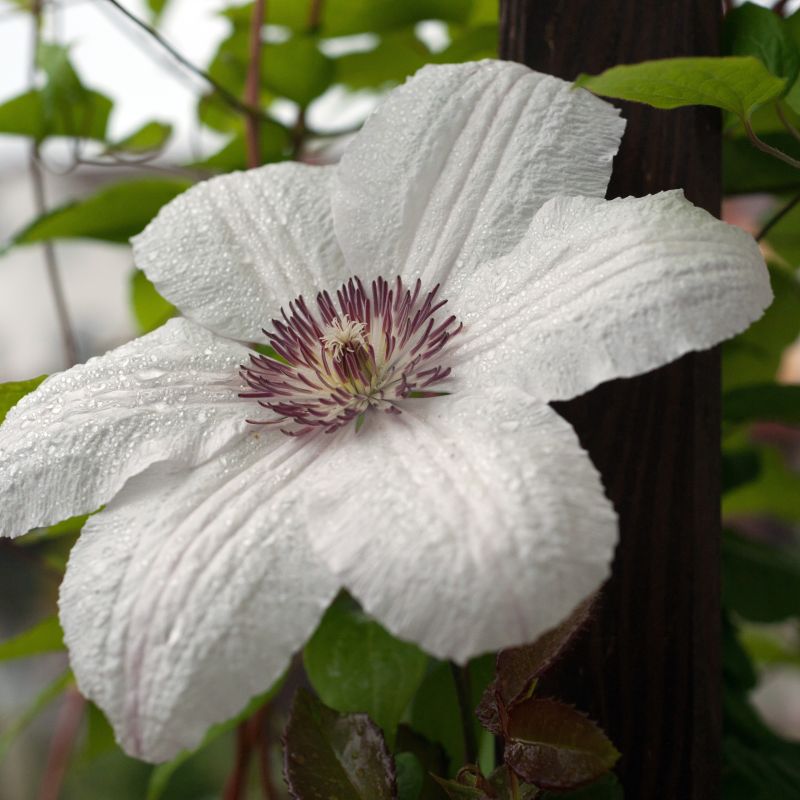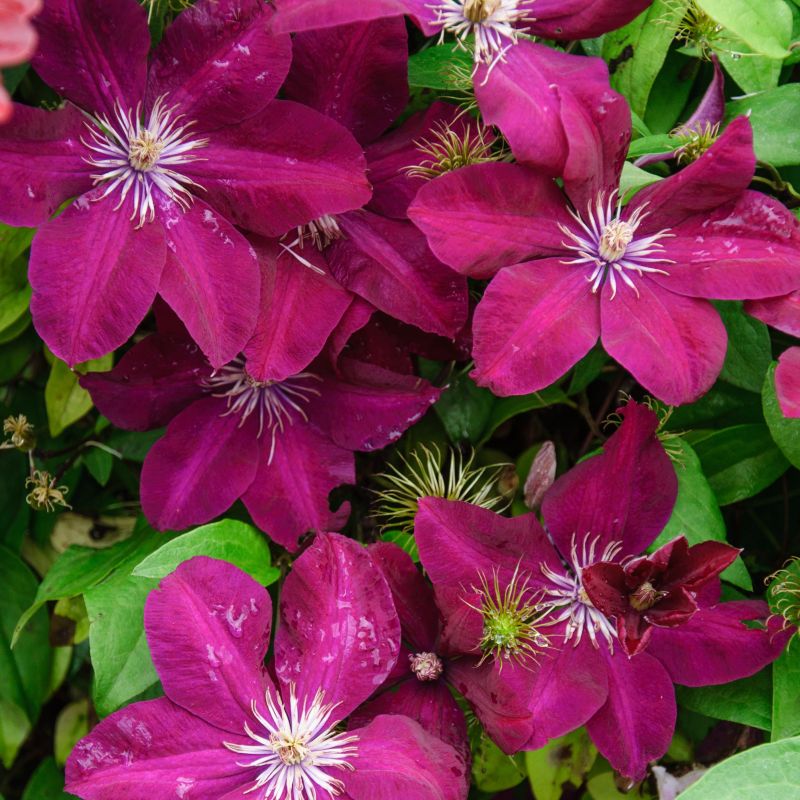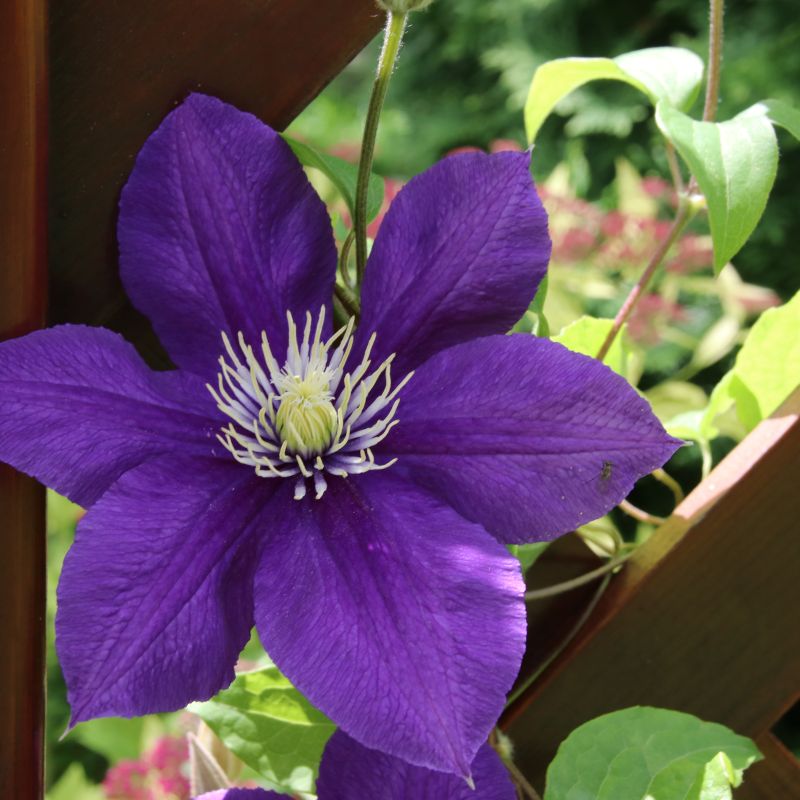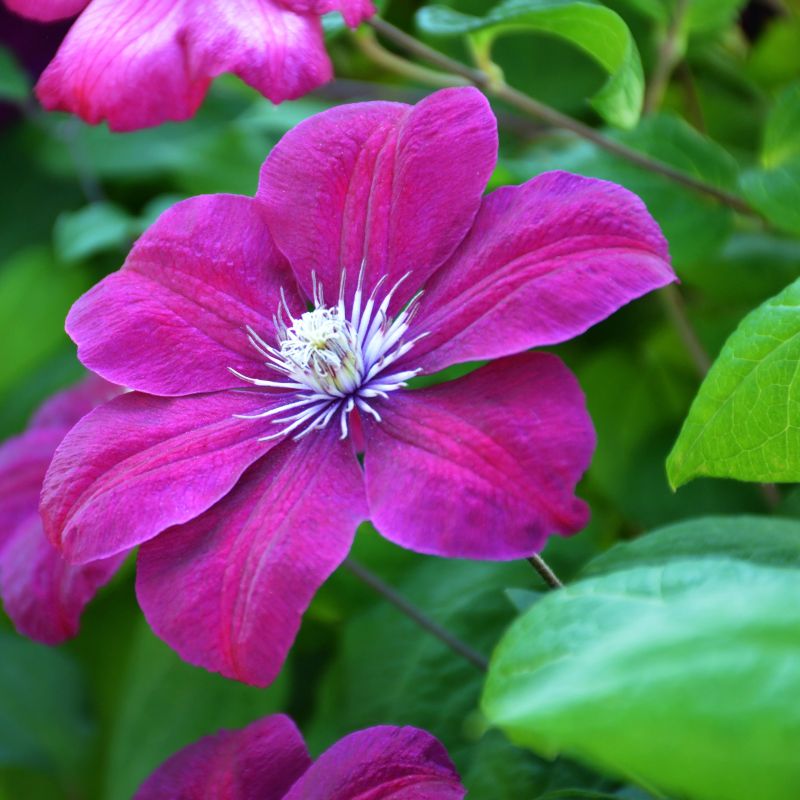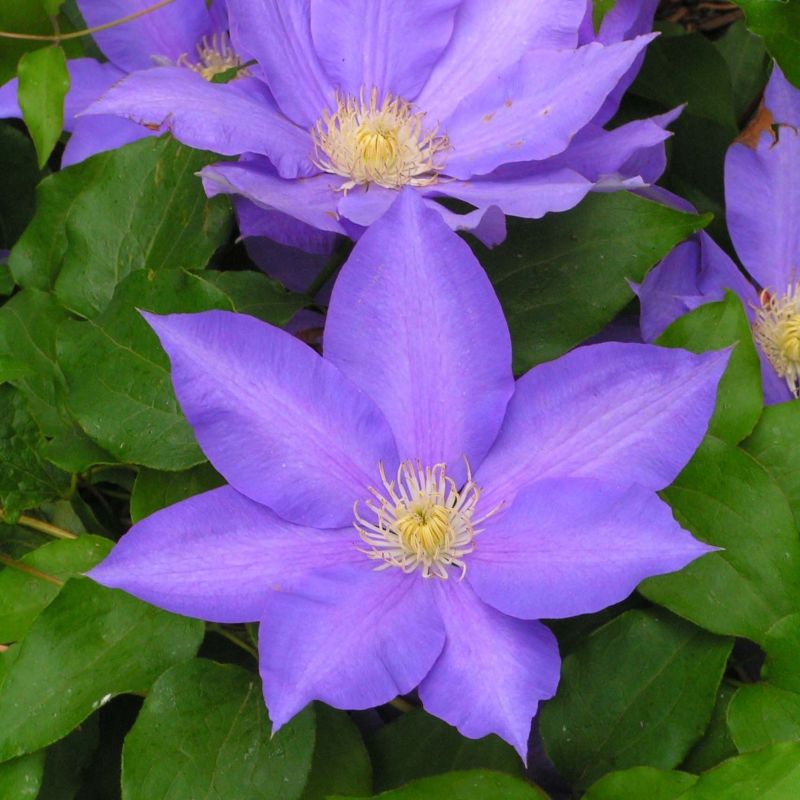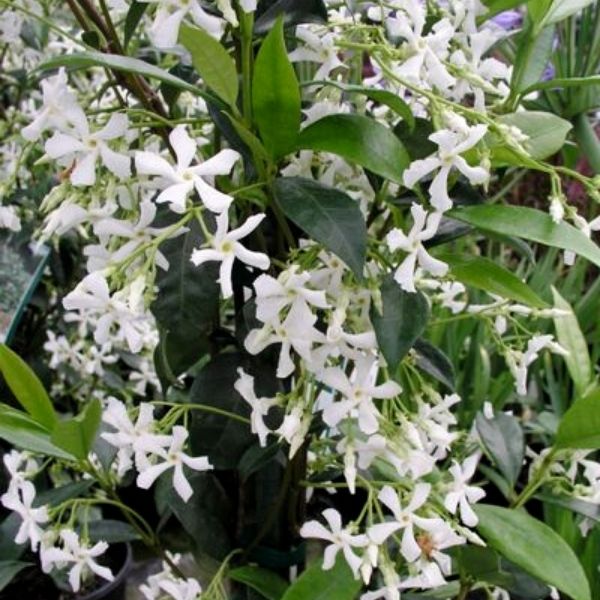
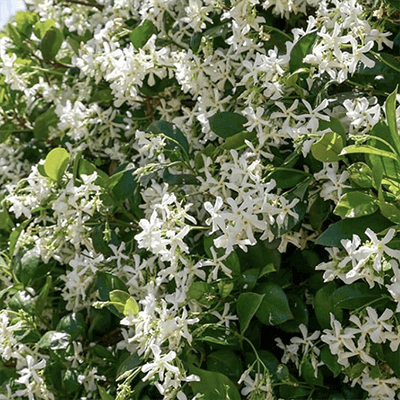
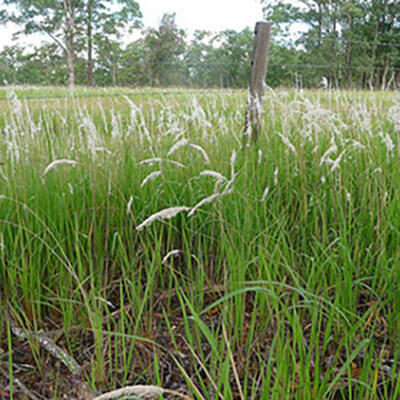
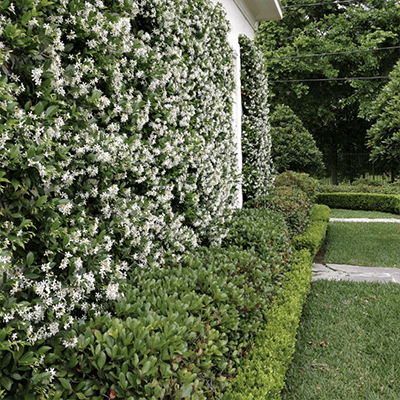
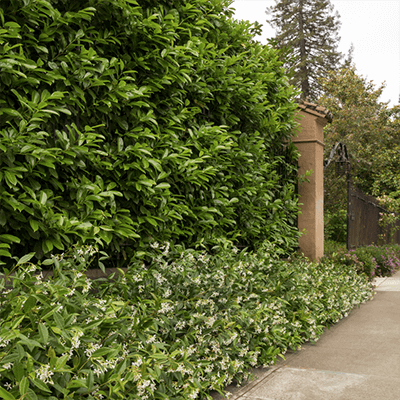
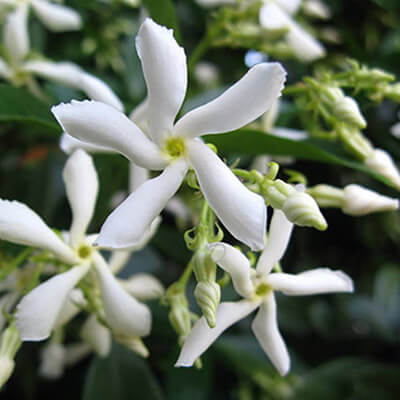
Star Jasmine
Trachelospermum jasminoides
41 reviews
Star Jasmine
Trachelospermum jasminoides
41 reviews
- Fragrant and sweet-smelling flowers
- Low maintenance and drought tolerant
- Attracts bees and butterflies to your garden
- Recommended by landscape designers for optimal fit in real yards
$155.00
$222.00
30% Off
- Ships to 43215 in 3 to 7 days
- Free Shipping
- Plant Arrival Guarantee
- In Stock
- Free Plant Consult
$200 - Landscape-Approved: Every Plant We Sell Comes With Design Expertise Behind It
- 3.5 Gallon
- Quart Container
Not just beautiful - intentionally selected by ShrubHub's 3D landscape design team to fit real-world spaces and maximize yard potential.
Why Star Jasmine?
Star Jasmine (Trachelospermum jasminoides) is a popular choice for gardens due to its fragrant white flowers and beautiful evergreen foliage. It is a versatile vine that can be trained to climb walls, trellises, or fences, making it ideal for creating a lush and aromatic backdrop. Additionally, Star Jasmine is known for its ability to attract pollinators like bees and butterflies, adding to its appeal in the garden.
People who loved this plant also bought
Sunlight
Star Jasmine requires full sun to partial shade. It grows best in bright, indirect light but can tolerate some shade. It should be protected from intense afternoon sun to prevent leaf scorching.
Watering
Star Jasmine has moderate watering requirements. It needs regular watering, especially during its active growing season, which is spring and summer. The soil should be kept evenly moist, but avoid overwatering as it can lead to root rot.
Fertilizing
Star Jasmine plants benefit from regular applications of a balanced, slow-release fertilizer. Use a fertilizer with an NPK ratio of 10-10-10 or similar. Apply in early spring and again in early summer, following the manufacturer's instructions for applicat
Star Jasmine (Trachelospermum jasminoides)
The Star Jasmine, scientifically known as Trachelospermum jasminoides, is a versatile and fragrant evergreen vine that belongs to the Apocynaceae family. It is widely cultivated for its beautiful, star-shaped white flowers and its delightful scent, reminiscent of jasmine.
This climbing plant is native to East Asia, specifically China, Japan, and Korea. It has become a favorite among gardeners and landscapers due to its ornamental appeal and the ease of growth in a variety of climates.
The foliage of the Star Jasmine comprises glossy, dark green leaves that are leathery in texture. These leaves remain evergreen throughout the year, providing an attractive backdrop for the stunning flowers. The flowers themselves appear in clusters from late spring to early summer, enhancing the visual interest of the plant.
The fragrant blooms are typically white, although some varieties may exhibit a slightly creamier hue. The flowers are small, about 1 inch in diameter, and have five long, pointed petals that unfurl to reveal a delicate center. They create a captivating display and attract pollinators like bees and butterflies to your garden.
The Star Jasmine is a versatile plant that can be utilized in various ways to enhance your outdoor space. It is an excellent choice for growing on trellises, fences, or pergolas, as it naturally climbs and twines around structures. This creates a charming backdrop and can also provide privacy when used to cover unsightly areas.
Moreover, due to its tolerance for pruning, the Star Jasmine can be trained as a ground cover or even as a low-height shrub. It is known to spread moderately and cover large areas, making it perfect for filling in borders or covering slopes. The cascading effect of the vine makes it particularly appealing when planted in hanging baskets or window boxes.
When it comes to care requirements, the Star Jasmine is relatively low-maintenance. It thrives in full sun to partial shade, with at least four to five hours of direct sunlight per day for optimal flowering. It prefers well-draining soil and should be watered regularly, especially during dry spells. This plant is also known for its tolerance of a wide range of soil types, including slightly alkaline or acidic soils.
With its fragrant blossoms, glossy foliage, and ability to adapt to various growing conditions, the Star Jasmine is undoubtedly a delightful addition to any garden or landscape. Whether it's used as a climber, ground cover, or cascading vine, this versatile plant will add beauty and charm to your outdoor space.
Plant Information:
| Botanical Name: | Trachelospermum jasminoides |
| USDA Zones: | 8 - 10 |
| Water: | Average |
| Exposure: | Full Sun |
| Soil Needs: | Average |
| Mature Height: | 4 - 6 feet |
| Mature Spread: | 5 - 7 feet |




Pollination Info
Pollination Info for Star Jasmine (Trachelospermum jasminoides)
Star Jasmine, also known as Trachelospermum jasminoides, is a flowering plant that belongs to the family Apocynaceae. It is a highly fragrant vine with clusters of small, white, star-shaped flowers. The pollination of Star Jasmine involves both self-pollination and cross-pollination.
1. Self-pollination: Star Jasmine has an efficient self-pollination mechanism. The flowers contain both male and female reproductive parts, making them self-compatible. The anthers (male parts) release pollen that falls directly onto the stigma (female part) within the same flower. This self-pollination ensures successful reproduction even in the absence of pollinators.
2. Cross-pollination: While Star Jasmine can self-pollinate, cross-pollination by pollinators is essential for genetic diversity and enhanced reproductive success. The main pollinators of Star Jasmine are bees, especially honeybees and bumblebees. These bees are attracted to the strong fragrance of the flowers and the nectar they produce.
During cross-pollination, pollen from the anthers of one flower is transferred to the stigma of another flower. This transfer can happen within the same plant (geitonogamy) or between different plants (allogamy). Bees inadvertently collect pollen grains on their bodies while seeking nectar. They then carry these pollen grains to other flowers as they move from one blossom to another.
The fragrant flowers and the presence of nectar act as rewards for the pollinators, attracting them to the flowers. The bees play a crucial role in the transfer of pollen between flowers, facilitating the formation of seeds.
3. Importance of pollination: Pollination is vital for the reproduction and survival of Star Jasmine. Successful pollination leads to the formation of seeds, which then develop into fruits containing the seeds. These fruits are small, dry and contain tufted hairs assisting in their dispersal by wind or animals.
Pollination also contributes to the overall health and biodiversity of ecosystems as it supports the growth of other plant species, provides food for insects and birds, and enhances genetic diversity.
In conclusion, Star Jasmine exhibits both self-pollination and cross-pollination. While it has mechanisms for self-pollination, it relies on bees for efficient cross-pollination. The fragrance and nectar-rich flowers attract bees, which in turn aid in the transfer of pollen and ensure successful reproduction.
FAQ
Star Jasmine (Trachelospermum jasminoides) FAQ
1. What is Star Jasmine?
Star Jasmine, scientifically known as Trachelospermum jasminoides, is a popular evergreen vine that is native to East Asia. It is known for its highly fragrant white flowers and glossy, dark green leaves.
2. How tall does Star Jasmine grow?
Star Jasmine can climb up to 20 feet in height if provided with proper support. However, its growth can be controlled through regular pruning.
3. Where should I plant Star Jasmine?
Star Jasmine thrives in well-draining soil and prefers a sunny to partially shaded location. It is suitable for growing in USDA hardiness zones 8 to 11.
4. How do I propagate Star Jasmine?
Star Jasmine can be propagated through stem cuttings. Take a 4-6 inch long cutting from a healthy plant, remove the lower leaves, and place it in a pot filled with a well-draining potting mix. Keep the cutting in a warm and humid environment until it develops roots.
5. When does Star Jasmine bloom?
Star Jasmine typically blooms in late spring to early summer, producing an abundance of highly fragrant white flowers. Some varieties may also bloom intermittently throughout the year.
6. How often should I water Star Jasmine?
Star Jasmine requires regular watering, especially during dry periods. Water deeply and allow the top few inches of soil to dry out between watering sessions. Avoid overwatering, as it can lead to root rot.
7. Does Star Jasmine require pruning?
Yes, regular pruning helps maintain a neat and compact growth habit for Star Jasmine. Prune in early spring before new growth begins to control its size and shape. Remove any dead or diseased branches and trim back long or unruly shoots.
8. Is Star Jasmine deer-resistant?
Star Jasmine is generally considered deer-resistant, as deer tend to avoid its slightly toxic foliage. However, in times of extreme hunger, deer may still nibble on the plant.
9. Can Star Jasmine be grown in containers?
Yes, Star Jasmine can be grown successfully in containers as long as they have good drainage. Choose a large pot and use a well-draining potting mix. You may need to provide a trellis or support for the vine to climb.
10. Does Star Jasmine attract bees and butterflies?
Yes, the fragrant flowers of Star Jasmine are highly attractive to bees and butterflies, making it a great addition to pollinator-friendly gardens.
Planting & Care
Planting & Care for Star Jasmine (Trachelospermum jasminoides)
Planting:
- Choose a location with well-draining soil and full sun to partial shade.
- Dig a hole that is about twice the size of the pot the Star Jasmine comes in.
- Remove the plant from its container and gently loosen the roots.
- Place the plant in the hole, making sure the root ball is level with or slightly above the soil surface.
- Backfill the hole with soil, firming it gently around the roots to remove air pockets.
- Water thoroughly after planting to help settle the soil.
Care:
- Water the Star Jasmine regularly during the first year to establish a strong root system. Once established, it is drought tolerant but will benefit from occasional deep watering in prolonged dry periods.
- Mulch around the base of the plant to conserve moisture, regulate soil temperature, and suppress weed growth.
- Prune Star Jasmine after flowering to maintain its shape and promote new growth. Remove any dead or damaged stems throughout the year.
- Fertilize the plant in spring with a balanced, slow-release fertilizer according to the package instructions.
- Monitor for common pests such as aphids, mealybugs, and spider mites. Treat infestations with insecticidal soap or neem oil if necessary.
- Train the vines of Star Jasmine onto a trellis, fence, or other support structure to give them something to climb on.
Tips:
- Star Jasmine can be susceptible to root rot if the soil is poorly drained. Make sure the planting location has good drainage.
- Consider planting Star Jasmine near seating areas or windows to enjoy its pleasant fragrance.
- Regularly check for any signs of disease or pest infestations and take appropriate action promptly.
Check Out These Verified Customer Reviews:
Customer Reviews
4.8 out of 5 based on 41 reviews
Thank you! Your review has been submitted.
I was impressed with the quality of the Star Jasmine plant I received. The website was easy to use and the shipment was quick. Overall, a great experience.
The fragrance of the star jasmine is heavenly. The plant is lush and healthy.
The star jasmine looks even better than the picture. Very pleased with the quality of the plant.
Item has been added to your cart.



